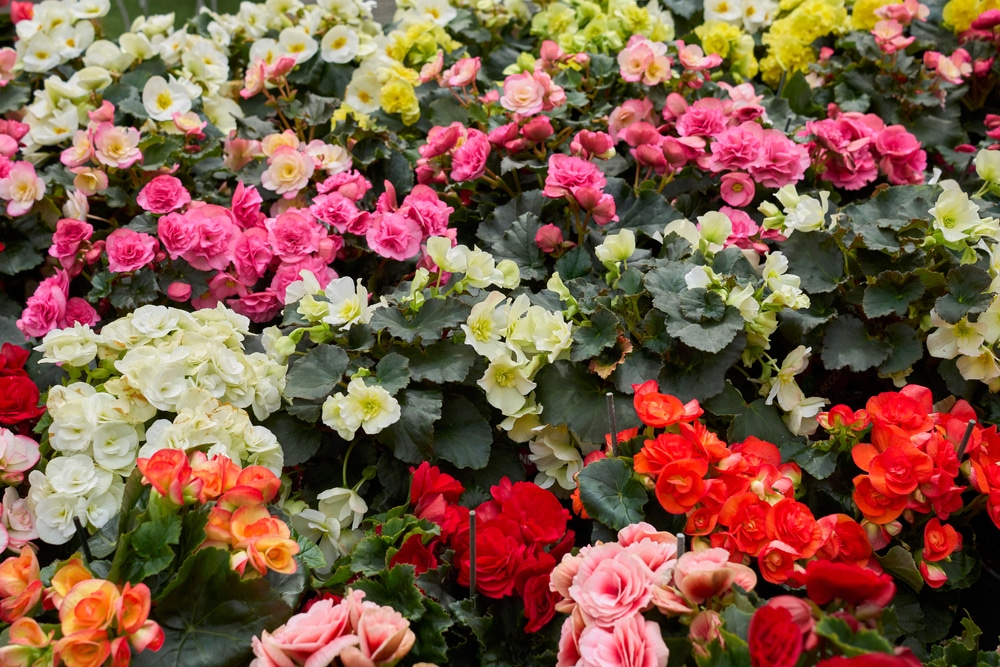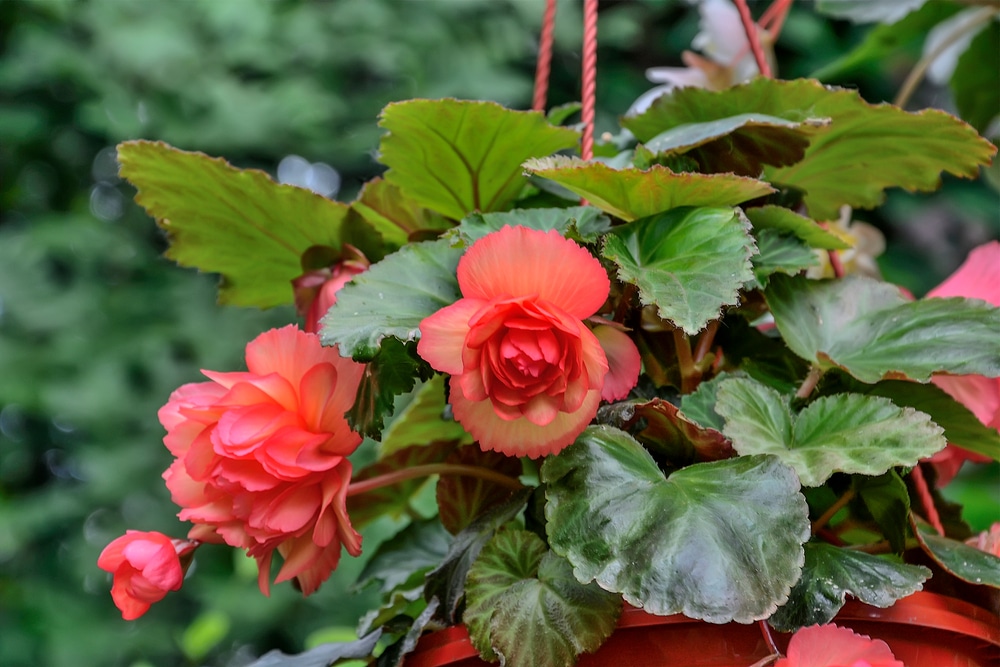There are so many species of Begonias that choosing one for your garden might be overwhelming. But if you like growing a low-maintenance plant that will delight you with eye-catching gorgeous flowers, you must consider planting a Begonia tuberhybrida.
These plants are suitable even for beginner gardeners, as they don’t require too much attention to grow. Of course, you must be familiar with these plants’ needs to grow thriving Begonias in your garden (or indoors). And if you need to learn more about them, don’t worry: you’ll find everything you need to know about these flowering perennials in this essential guide!
| Botanical Name | Begonia Tuberhybrida |
| Common Name | Tuberous Begonia |
| Plant Type | Perennial |
| Flower Color | The plant produces showy pink, yellow, white, or red colors with four-colored tepals that usually come in pairs of varying sizes. |
| Size When Mature | Between 8 and 20 inches tall
Up to 15 inches wide |
| Bloom Time | Early Summer to Early Fall |
| Sun Requirements | Bright indirect light or partial sunlight |
| USDA Hardiness Zones | 8-11 |
| Soil PH Range | Between 5.5 and 5.8 |
| Soil Type | Acidic, fertile, and well-draining |
| Water Needs | Medium |
| Native Area | Andes Mountains in South America |
What you Need to Know About Begonia Tuberhybrida
Begonias are native to tropical and subtropical regions and display bright-colored flowers that will enhance the looks of any location. As you may imagine from its name, the group of Begonia Tuberhybrida is tuber-rooted.
These plants can thrive even in low-light conditions and are versatile. Also, you can find them in several colors, including white, pink, yellow, orange, and even variegated. Begonia tuberhybrida is a sub-group of plants rather than a variety. Inside it, some flowers come in different shapes and with diverse patterns and flower types.
These flowering perennials do well in garden beds or boarders, but you can also find cascade species that will thrive in hanging baskets.
How to Care for Begonia Tuberhybrida
With the proper care, you’ll enjoy bright colors all summer long with begonia tuberhybrida plants. And to make things less challenging for you, we collected everything you need to know about growing a thriving Begonia Tuberhybrida in the following sections.
Light
If you are growing your begonias as houseplants, place them in a room that receives plenty of bright and indirect light. The ideal location would be next to east or west-facing window. Avoid direct sunlight exposure: it may scorch your begonia tuberhybrida’s leaves.
Outdoors, you’ll have much better results planting your begonias under partial shade, best if in a location that only receives sun during the morning hours. Also, protect your plant from winds: they will dry the soil faster and might turn its leaves brown.
Water and Soil Needs
You’ll need to provide your begonia tuberhybrida with adequate soil to allow it to thrive in your garden. As long as it drains well, your plant will adapt to most soils. However, it will do much better in mixtures with perlite and sand. Avoid overwatering your begonias: they are susceptible to root rot and won’t survive in soggy substrates.
Instead, apply extra moisture when the soil feels dry. Remember to adapt your water schedule to your local climate conditions: you’ll probably have to increase the frequency during the summer when your begonias will dry much quicker than in the winter.
Temperature Requirements
You can grow Begonia Tuberhybridas outdoors if you live in USDA hardiness zones between 8-11. Alternatively, these plants also perform well indoors. Avoid exposing them to temperatures below 59°F and above 80°F.
Also, consider increasing humidity by misting your plant once or twice a week.
Fertilizer
Begonia tuberhybridas grow best when they receive a constant supply of nutrients. Because of their large flowers, these plants need plenty of phosphorous to keep blooming. However, dilute the fertilizer before applying it at half (or even one-third) strength: doing so will save the soil from burning.
Plus, don’t forget to water your plant to increase absorption. Cease the application in the winter, when your plants won’t need as much nutrition.
Common Diseases
Sadly, begonias are prey to several insects and even deer. However, you must pay particular attention to mites and thrips. If you notice yellow leaves or stunted growth, mites could be your problem. On the other hand, a reddish line on the upper sides of the leaves is a symptom of thrips. In both cases, you will have to apply an organic pesticide to prevent an invasion and protect your plant.
They pair well with the angel wing begonia to create a nice contrast if you’re looking for some variety in your begonias.


